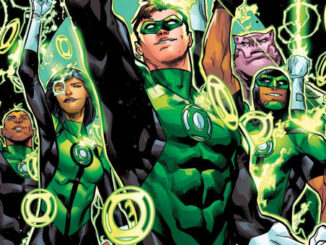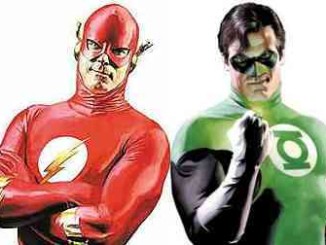Warner Brothers has just increased the visual effects budget for this summer’s Green Lantern an additional $9 million dollars. The money will be spent to bring on an additional visual effects house to help keep the film on track for its June 17th release.
Variety is reporting that this last minute scramble isn’t due to the major effects companies already on the project -Sony Imageworks and Rising Sun Pictures – running behind schedule or delivering unsatisfactory work. On the contrary, their material is reportedly being delivered well within contractual specifications.
Chris de Faria, Warner’s exec VP of digital production, animation and visual effects, also denied that things are running smoothly on the film, stating, “There is no problem on Green Lantern. We try to add things to make the movie better until the 11th hour. That doesn’t mean we’re risking the movie up to the 11th hour.”
Instead, working up to the last minute on big tent pole features has become the norm in recent years due to how the post-production process has been affected by the time and money intensive demands of today’s visual effects technology. In order to be cost-effective, visual effects work only gets into high gear during the late stages of post-production work, after the film has been edited. No one wants the waste of a completed visual effects sequence hitting the editing room floor. Even then, sometime effects are changed and tweaked as the film inches closer to release based on audience testing or even fan reaction to a trailer.
However, since these effects heavy films are strongly locked into their release dates which can’t be changed without getting strong blow back from exhibitors and companies doing tie-in promotions with the picture. (Think fast food restaurant kid’s meals and the like.) Tentpole films are also a major component of a studio’s fiscal planning and having to push the release of one several months would be disastrous to a quarterly earnings report, and even worse in Hollywood, make an executive look bad.
And while it is typical to schedule anywhere between 36 to 40 weeks of post-production just for visual effects work. But that amount of time can shrink if a director and editor dither over delivering the film’s final cut. And as the months before a film’s release shrinks to weeks, more money will be thrown at a project in order to insure that it will meet that date. The only other option is to release a film that is less of a spectacle than its competitors at the box office, and that is an option studios don’t want to contemplate.
In Green Lantern‘s case, the film’s visual effects budget of $45 million wasn’t deemed enough money for the approximately 1,400 shots required. The 20% increase will help offset the film being released in 3D, something not initially accounted for, as well as pay for the reinsertion of an entirely computer generated pre-title sequence that had originally been cut during the film’s development. If anything, the restoration of the pre-titles sequence can be seen as a vote of confidence for the film from the studio.
Meanwhile, around Hollywood, other effects houses continue to burn the midnight oil to meet their own deadlines. Reportedly, one house working on Transformers: Dark Of The Moon is working its teams seven days a week for 12 hours a day, and even canceled their Easter Sunday holiday in order to meet their commitments.





